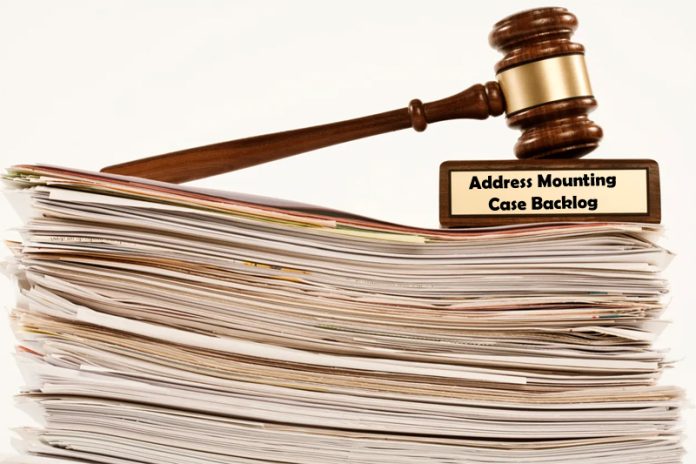The staggering backlog of over 62,000 cases in Indian High Courts for over three decades, with three cases pending since 1952, reflects a chronic and structural malaise that has long plagued India’s judicial system. The magnitude of this crisis-a staggering five crore cases pending across the entire judiciary-underscores a dire need for reform. President Droupadi Murmu urging a transformation in the judiciary’s “culture of adjournments,” alongside Law Minister Arjun Ram Meghwal’s pointed critique of the infamous “tareekh pe tareekh” mentality, have once again brought this crisis into the spotlight. It is not merely about the number of cases languishing in courts but the quality of justice being dispensed. Justice delayed, as the adage goes, is justice denied. The inefficiency and lethargy in the system erode public confidence and perpetuate a perception of a judiciary that is detached from the needs of the people.
According to the National Judicial Data Grid, of the 58.59 lakh cases pending in High Courts, 42.64 lakh are civil, and 15.94 lakh are criminal in nature. On the one hand, litigants suffer emotionally and financially as they await decisions, while on the other, courts find themselves clogged with old cases, limiting their ability to promptly address new cases. This problem is not confined to HC alone. The District Courts, which constitute the first rung of the judiciary, are in even worse shape. They handle the vast majority of legal disputes, but they are also severely understaffed and overburdened. The Supreme Court is no exception to the backlog, though the numbers there are relatively lower.
A significant contributor to the backlog is the entrenched “culture of adjournments.” The repeated deferral of cases not only increases the time spent on each case but also diminishes the efficiency of the judicial process. This cycle of delay encourages litigants and lawyers to prolong cases, sometimes to the advantage of one party, while the other party suffers in limbo. Judges need to exercise greater restraint in allowing postponements and should impose penalties for frivolous requests for delays. Furthermore, reforms are required to set stricter guidelines and timelines for the completion of trials, especially in lower courts, which bear the brunt of the backlog.
India’s judicial infrastructure is another weak link. Despite an ever-increasing population and rising legal disputes, the judiciary has not grown proportionately in terms of resources, judges, or technological capabilities. Many courts operate without basic facilities, and outdated systems often lead to administrative delays. According to various estimates, High Courts across the country face a shortfall of about 25% of the required number of judges. One of the immediate solutions to this crisis would be to fast-track the appointment of judges. Streamlining the appointment process could inject much-needed manpower into the system.
Technology offers a pathway to addressing some of the systemic inefficiencies plaguing the judiciary. E-courts, digitisation of case records, and online hearings have already shown promise during the COVID-19 pandemic. The use of technology to streamline case management could help reduce delays by automating routine administrative functions. Additionally, data analytics tools could be employed to monitor case flow, identify bottlenecks, and predict potential delays, allowing the judiciary to allocate resources more effectively. The judiciary cannot tackle this crisis alone. The Government, for its part, needs to ensure that adequate financial and human resources are allocated to the judiciary. It also has a role to play in simplifying laws and procedures, reducing the complexity of litigation, and, thereby, lessening the burden on courts. Moreover, alternative dispute resolution mechanisms, such as arbitration and mediation, should be encouraged to reduce the burden on courts. Increasing the use of Lok Adalats and empowering tribunals to settle specialised disputes could also go a long way in alleviating the strain on the regular courts. The road ahead requires concerted efforts to modernise the judiciary, reduce delays, and make the legal process more accessible and efficient.
Trending Now
E-Paper


